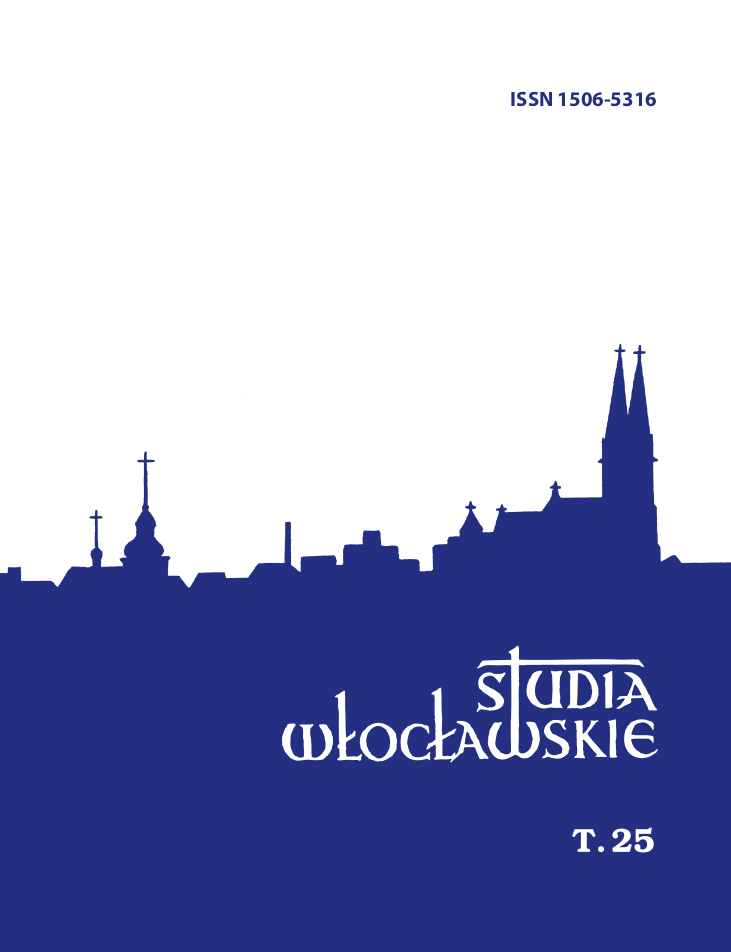The trinitarian aspect of Marian dogmas. Mary icon of the Holy Spirit
DOI:
https://doi.org/10.52404/ttnwloc.stwl.25.1Keywords:
Marian dogmas, Holy Trinity, Holy Spirit, Maksymilian Kolbe, Jacek BolewskiAbstract
Marian dogmas tell us of Mary’s special role in the history of salvation. At the same time they speak to us of the origin and destiny of every human being. Moreover, in Marian truths the Triune God is revealed. After all, the history of salvation is an encounter of God the Father, the Son and the Holy Spirit with human beings, in a meeting of two freedoms: absolute freedom and created freedom. Mary is not merely an instrument in God’s hands, but a person who enters into a relationship with the three divine persons. This relationship is the essence of her divine motherhood, virginity, immaculate conception and assumption. The mystery of Mary unfolds in the Trinitarian perspective, while at the same time the Holy Trinity reveals its mysteries in the person of Mary. It seems that the Trinitarian dimension of Mariology, although treated already by various authors, still hides many aspects to be discovered. Reflection on the mystery of Mary begins with her divine motherhood, that is, with the truth that she is the Mother of Jesus, true God and true man. Further, the Trinitarian analysis of Marian dogmas shows her special relationship with the Holy Spirit. The evangelists Luke and Matthew point to the active role of the Spirit in the conception of Jesus. It is by the power of the Spirit, although because of the merits of Jesus, Mary was preserved from sin. Finally, it is the Spirit, in the event of the Assumption, who introduces Mary into the eternal life of the Holy Trinity. Hence, some theologians want to see in Mary an icon of the Spirit who in the history of salvation does not show us his face, while, in a certain sense, we can see it in the face of Mary. Jacek Bolewski, taking up the intuitions of Maksymilian Kolbe, calls the Holy Spirit the uncreated Immaculate Conception. The Polish Jesuit believes that the active role of the third divine person in the life of Mary allows us to reflect on the active role of the Spirit in the eternal life of the Holy Trinity complementing the traditional theology of the Immanent Trinity, in which the Spirit seems to be rather passive.
Downloads
References
Concilio Vaticano II, Lumen gentium, 1964.
Leone XIII, Divinum illud munus, 1897.
Pio XII, Anúncio radiofónico aos fiéis portugueses, 13 maggio 1946.
Giovanni Paolo II, Mulieris dignitatem, 1988.
Giovanni Paolo II, Udienza generale,15 ottobre 1997.
Giovanni Paolo II, Udienza generale, 20 gennaio 1999.
Francesco, Tv2000, Il Credo e la resurrezione della carne, https://www.avvenire.it/multimedia/pagine/tv2000-papa-francesco-preghiera-credo [25.11.2022].
Ambrogio, Esposizione del vangelo secondo Luca/1, in: Opere di Sant’Ambrogio, XI, Roma 1978.
Scritti di Massimiliano Kolbe, Roma 1997.
Bartosik G.M., Duch Święty a pośrednictwo Matki Bożej według św. Maksymiliana M. Kolbego, http://www.ptm.rel.pl/index.php?option=com_content&view=article&id=44 [25.11.2022].
Bolewski J., Misterium Mądrości. Traktat sofio-mariologiczny, Kraków 2012.
Bolewski J., Niebieska Niewiasta. Mądrość i Maryja, Niepokalanów 2009.
Bulgakov S., L’Agnello di Dio, Roma 1990.
Bulgakov S., Il roveto ardente, Cinisello Balsamo (Milano) 1998.
Cesarale E., L’Agnello, il Drago e le Donne, Assisi 2021.
Coda P., Il mistero della Trinità e Maria nella Chiesa cattolica alle soglie del terzo millennio, „Nuova Umanità”, 23(2001), nr 3–4, p. 385–418.
Evdokimov P., La donna e la salvezza del mondo, Milano 1989.
Evdokimov P., Lo Spirito Santo nella tradizione ortodossa, Roma 1971.
Fiores De S., Come la Chiesa cattolica è giunta alla definizione dogmatica dell‘immacolata concezione, in: Maria Santa e immacolata segno dell’amore salvifico di Dio Trinità, ed. S. De Fiores, E. Vidau, Roma 2000, p. 25–49.
Fiores De S., Maria nella teologia contemporanea, Roma 1991.
Fiores De S., Trinità, in: S. De Fiores, Maria. Nuovissimo Dizionario, vol. 2, Bologna 2006, p. 1717–1745.
Forte B., Trinità come storia. Saggio sul Dio cristiano, Cinisello Balsamo 1985.
Greshake G., Il Dio Unitrino. Teologia trinitaria, Brescia 2000.
Hemmerle K., Leben aus der Einheit, Freiburg 1995.
Kowalczyk D., Lo Spirito Santo e l’Immacolata Concezione. Intuizioni di Massimiliano Kolbe nella teologia di Jacek Bolewski, „Gregorianum” 101(2020), nr 2, p. 251–271.
Ladaria L., Introduzione alla antropologia teologica, Casale Monferrato 1992.
Marco De V., L’esperienza di Dio nell’unità. Il pensiero filosofico, teologico ed estetico di Klaus Hemmerle, Roma 2012.
Meditazioni mariane. Pagine scelte degli autori di tutti i tempi, a cura di P. Fausto Casa, Padova 1979.
Muñoz Iglesias S., Maria y la Trinidad en Lucas 1–2, in: Mariologia fundamental. Maria en el mistero de Dios, Salamanca 1995, p. 1–19.
Piacentini E., Dottrina mariologica del P. Massimiliano Kolbe, Roma 1971.
Pocher L., Dalla terra alla madre. Per una teologia del grembo materno, Bologna 2021.
Pocher L., Il grembo di Maria e i suoi dolori. Un modello di collaborazione alla nuova creazione, Dissertazione per il dottorato difesa alla Pontificia Università Gregoriana, Roma 2020.
Rahner K., Theós nel Nuovo Testamento, in: K. Rahner, Saggi teologici, Roma 1965, p. 467–585.
Downloads
Published
How to Cite
Issue
Section
License
Copyright (c) 2024 Studia Włocławskie

This work is licensed under a Creative Commons Attribution 4.0 International License.




